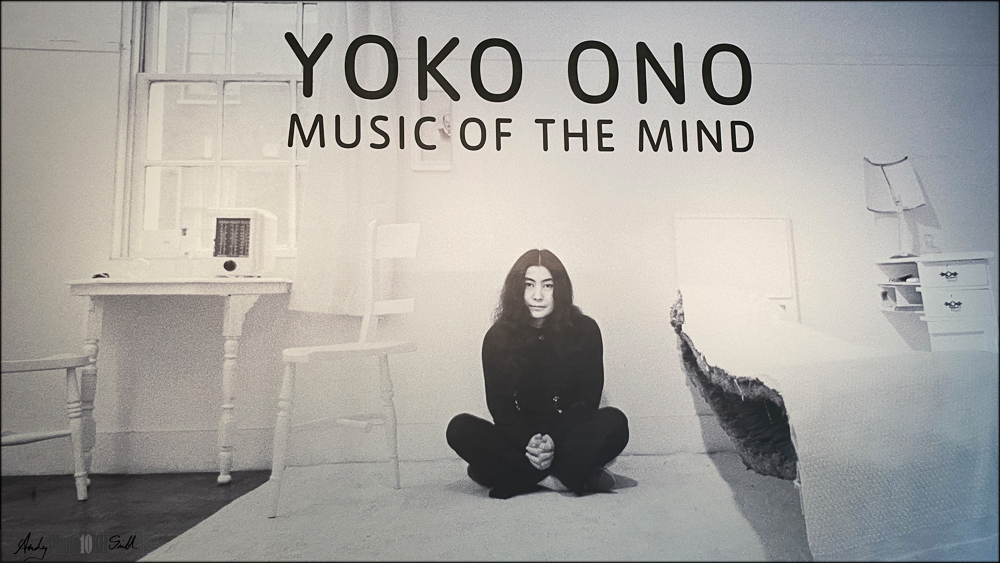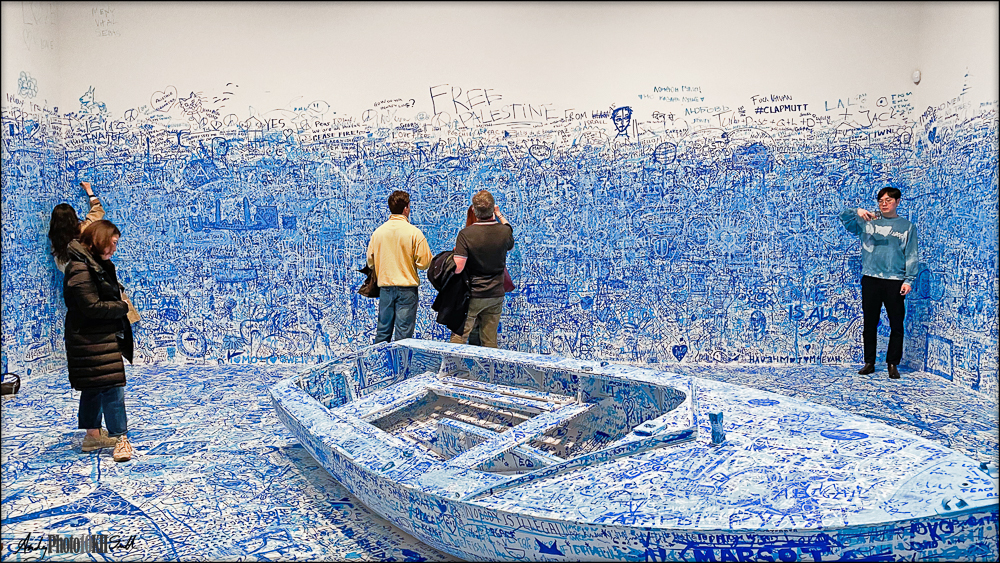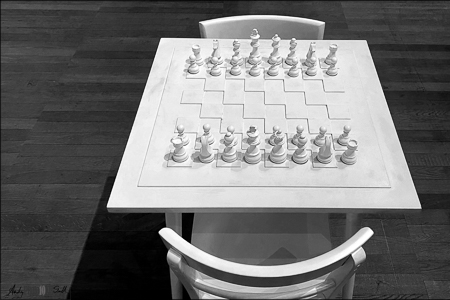
February to 1st September 2024 – Floor 2, Blavatnik Building, Tate Modern, London, SE1 9TG
As a visual and performance artist, Yoko Ono is probably best know for her 1964 conceptual work “Cut Piece” where members of the audience were invited to cut and remove pieces of her clothing as she passively sat cross-legged on the stage. Usually interpreted as a feminist statement drawing attention to violence against women as the cut clothing represents damage to the woman’s body. However, Ono is more ambiguous and often described it in a more positive sense, drawing inspiration from Buddhism: as a way of her giving some of her best to the audience. A view supported by the fact that she always wore her best suit and said that the performer need not necessarily be female.
The current retrospective at the Tate Modern contains film footage from “Cut Piece” and other performance works, plus many (over 200 apparently) art works including scores, photographs, films and installations. However, the show is dominated by interactive works where visitors are invited to participate in activities that range from simple acts of imagination to full encounters with Ono’s work such as helping to fill the walls and floor with wishes for peace and support in her Refugee Boat room (below photographed by me on 25th February)

Other interactive pieces include “Play it by Trust”, all white chess, below …

I saw the white chess set and board, left, on the 23rd April when it’s ridiculousness appealed to my sense of the surreal.
In the context of Ono’s campaign for world peace, white is the symbol of peace and the fundamentally combative nature of playing chess is replaced by a more collaborative activity which stimulates conversation.
The exhibition has many chess sets like that above and visitors are encouraged to play – descriptions of how chess pieces move are also included.
Now: look again at the slightly wonky photograph which is the banner for both this post and the exhibition itself. Ono sits in the middle of a white room, a 1967 installation called “Half-A-Room” as she says “everything I see here, the other half is invisible. And that other half may be something that we might see one day, but now we don’t see it.”
Not unusually for an exhibition at the Tate Modern, it is generally packed to the rafters with cheerful but bemused tourists. It’s fun, but unless you are already a fan of Yoko Ono, my advice is to find a quiet time to visit or prioritise some of the other excellent exhibitions in the capital.